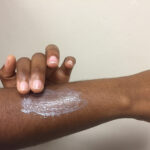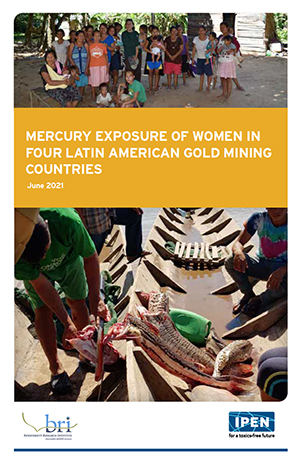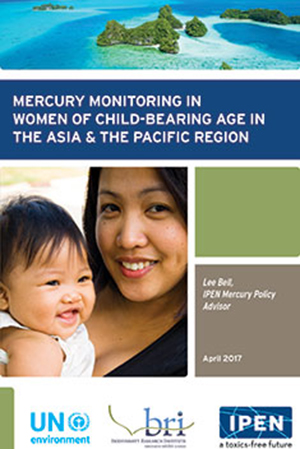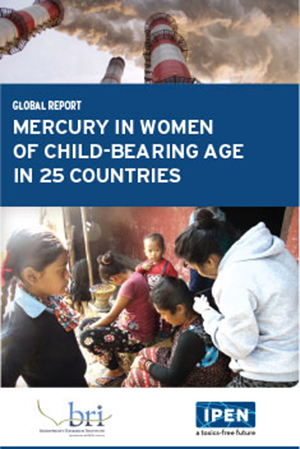News:
Eliminating Mercury Skin Lightening Products
 Inorganic mercury is a common ingredient found in skin lightening products (SLPs). SLPs come in different forms, including creams and soaps. BRI is collaborating with the United Nations Environment Programme and the World Health Organization to help eliminate the use of all skin lightening products. For details and updates on project activities, please visit the UNEP Global Mercury Partnership page here.
Inorganic mercury is a common ingredient found in skin lightening products (SLPs). SLPs come in different forms, including creams and soaps. BRI is collaborating with the United Nations Environment Programme and the World Health Organization to help eliminate the use of all skin lightening products. For details and updates on project activities, please visit the UNEP Global Mercury Partnership page here.
Global Mercury Monitoring in Humans
BRI is working on several fronts to conduct and promote mercury biomonitoring across the globe. Biomonitoring is the process of assessing the health of organisms and ecosystems and tracking changes in mercury risk and exposure over time.
Monitoring mercury exposure to humans will help the global community to meet the requirements of the Minamata Convention on Mercury and will also help identify global biological hotspots that represent elevated levels of mercury exposure that may pose serious threats to both ecosystem and human health.
BRI and IPEN Collaborative Studies
BRI and IPEN have collaborated to conduct several global mercury studies in response to strong public interest and governmental negotiation of the Minamata Convention—the first global treaty on the environment by the UN Environment Programme (UNEP) in more than a decade. These projects focused on monitoring mercury in women of childbearing age across the globe and are summarized and linked below.
New study finds indigenous Bolivian women and women in Latin American gold mining countries have extremely high mercury levels

Women in three Latin American countries who rely on fish for protein and live in proximity to gold mining activity have been found to have elevated mercury levels, according to a new study, Mercury Exposure of Women in Four Latin American Gold Mining Countries. The study was conducted by the International Pollutants Elimination Network (IPEN) together with Biodiversity Research Institute.
Researchers analyzed mercury levels in women of child-bearing age who are most sensitive to the toxic effects of mercury. Women in gold mining regions in Venezuela, Bolivia, Brazil, and Colombia volunteered to be assessed for the study. A cohort of Colombian women in a region that has switched from mercury-based gold extraction to non-mercury methods were included as a control group for comparison and were shown to have low levels of mercury in their bodies.
Read the full Report here.
Mercury threat to women and children across three oceans

This study builds upon previous mercury monitoring activities by IPEN and BRI and is focused on measuring the mercury body burden of 757 women of child-bearing age in Small Island Developing States (SIDS) and SIDS-like locations. SIDS-like locations include islands, often remote, where industrial development levels are low and the population relies on local fisheries as a major source of dietary protein. The data indicate that there is a serious and substantial threat to women’s and children’s health from mercury exposure in most of the locations where sampling took place.
Mercury monitoring in women of childbearing age in the Asia and the Pacific Region

Researchers examined hair samples from women, aged 18 – 44, from Cook Islands, Marshall Islands, Tuvalu, and Kiribati, and two landlocked Asian countries, Tajikistan and Nepal. The study reveals that women of childbearing age living in these countries have elevated levels of mercury in their bodies.
Mercury exposure can damage the nervous system, kidneys, and cardiovascular system. Developing organ systems, such as the foetal nervous system, are the most sensitive to the toxic effects of mercury, although nearly all organs are vulnerable.
Mercury in women of childbearing age in 25 countries

This study aimed to measure the prevalence of mercury body burden at levels that may cause neurological and organ damage. Mercury can be transferred to a fetus during pregnancy, exposing the developing baby to the potent neurotoxin. The study found significantly elevated mercury concentrations in the hair of women in numerous regions of the world related to three predominant causes of mercury pollution: coal-fired power plants; artisanal small-scale gold mining (ASGM); and local contaminated sites from various industries releasing mercury to soil, water, and air.
Global Mercury Hotspots

The Global Fish and Community Mercury Monitoring Project is the first of its kind to identify, in one collaborative effort, global biological hotspots that represent elevated levels of mercury exposure that may pose serious threats to both ecosystem and human health. The report Global Mercury Hotspots: New Evidence Reveals Mercury Contamination Regularly Exceeds Health Advisory Levels in Humans and Fish Worldwide outlines the initial findings from 12 countries.
As an extension of this project, researchers published findings in the journal article, A global-scale assessment of fish mercury concentrations and the identification of biological hotspots, which was published in Science of the Total Environment in 2019.
The article presents data on a rapid assessment of fish total mercury (THg) concentrations from 40 different waterbodies in 26 countries, and provides a model for mercury monitoring in support of the Minamata Convention on Mercury.



